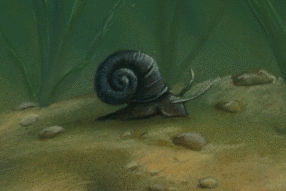Browse "Things"
-
Article
Slavery Abolition Act, 1833
An Act for the Abolition of Slavery throughout the British Colonies; for promoting the Industry of the manumitted slaves; and for compensating the Persons hitherto entitled to the Service of such Slaves (also known as the Slavery Abolition Act) received Royal Assent on 28 August 1833 and took effect 1 August 1834. The Act abolished enslavement in most British colonies, freeing over 800,000 enslaved Africans in the Caribbean and South Africa as well as a small number in Canada.
"https://d2ttikhf7xbzbs.cloudfront.net/media/media/9ea57f84-ae9c-45f6-97a9-ee077202abee.jpg" // resources/views/front/categories/view.blade.php
https://d2ttikhf7xbzbs.cloudfront.net/media/media/9ea57f84-ae9c-45f6-97a9-ee077202abee.jpg
-
Macleans
Slavery in Sudan
This article was originally published in Maclean’s magazine on April 10, 2000. Partner content is not updated. Like many a fellow nomad, Jongchol Dudi Mayar measures distance in days.
"https://development.thecanadianencyclopedia.ca/images/tce_placeholder.jpg?v=e9dca980c9bdb3aa11e832e7ea94f5d9" // resources/views/front/categories/view.blade.php
https://development.thecanadianencyclopedia.ca/images/tce_placeholder.jpg?v=e9dca980c9bdb3aa11e832e7ea94f5d9
-
Article
Enslavement of Indigenous People in Canada
To a tremendous extent, the enslavement of Indigenous peoples defines slavery in Canada. Fully two-thirds of the slaves in the colony of New France were Indigenous. After 1750, the number of Indigenous slaves brought into French Canada began to decline. When slavery was abolished in British colonies in 1834, Black slaves far outnumbered Indigenous slaves. (See also Black Enslavement in Canada.) The enslavement of Indigenous peoples is part of a dark legacy of colonization that has had implications on generations of Indigenous peoples in Canada and throughout North America.
"https://d2ttikhf7xbzbs.cloudfront.net/media/media/1ddef9e7-e3c5-4510-9e9c-e1994ac29434.jpg" // resources/views/front/categories/view.blade.php
https://d2ttikhf7xbzbs.cloudfront.net/media/media/1ddef9e7-e3c5-4510-9e9c-e1994ac29434.jpg
-
Article
Para Ice Hockey (Sledge Hockey)
Para ice hockey (also known as sledge hockey) is a version of ice hockey played by athletes with a lower-extremity disability. Players use a two-bladed sledge, as well as sticks with spikes at one end for propulsion and curved blades at the other end for shooting. Canada is a world power in the game and has won medals at all of the Paralympic Games except 2002 and 2010. In 2016, the International Paralympic Committee decided to rename and rebrand the sport under its jurisdiction. Since November 2016, sledge hockey has been officially known as para ice hockey.
"https://d2ttikhf7xbzbs.cloudfront.net/media/media/b8c0b918-95ee-45f0-a3b9-31dbff0e7f64.jpg" // resources/views/front/categories/view.blade.php
https://d2ttikhf7xbzbs.cloudfront.net/media/media/b8c0b918-95ee-45f0-a3b9-31dbff0e7f64.jpg
-
Article
Sleeping Car Porters in Canada
Sleeping car porters were railway employees who attended to passengers aboard sleeping cars. Porters were responsible for passengers’ needs throughout a train trip, including carrying luggage, setting up beds, pressing clothes and shining shoes, and serving food and beverages, among other services. The vast majority of sleeping car porters were Black men and the position was one of only a few job opportunities available to Black men in Canada. While the position carried respect and prestige for Black men in their communities, the work demanded long hours for little pay. Porters could be fired suddenly and were often subjected to racist treatment. Black Canadian porters formed the first Black railway union in North America (1917) and became members of the larger Brotherhood of Sleeping Car Porters in 1939. Both unions combatted racism and the many challenges that porters experienced on the job.
"https://d2ttikhf7xbzbs.cloudfront.net/media/new_article_images/SleepingCarPorters/L3D211046.jpg" // resources/views/front/categories/view.blade.php
https://d2ttikhf7xbzbs.cloudfront.net/media/new_article_images/SleepingCarPorters/L3D211046.jpg
-
Article
Slovenian Music in Canada
The first substantial Canadian immigration from Slovenia (the northwestern region of the Kingdom of Serbs, Croats, and Slovenes, which was renamed Yugoslavia in 1929) occurred 1918-29. Peasants and labourers moved to Ontario, many becoming farmers on the Niagara peninsula.
"https://development.thecanadianencyclopedia.ca/images/tce_placeholder.jpg?v=e9dca980c9bdb3aa11e832e7ea94f5d9" // resources/views/front/categories/view.blade.php
https://development.thecanadianencyclopedia.ca/images/tce_placeholder.jpg?v=e9dca980c9bdb3aa11e832e7ea94f5d9
-
Article
Slug
Slug is a common name for several terrestrial pulmonate and numerous marine gilled species of gastropod molluscs conspicuous by the lack of an exposed shell.
"https://d2ttikhf7xbzbs.cloudfront.net/media/media/51c710f6-6973-4da3-8a4a-d48caed18d86.jpg" // resources/views/front/categories/view.blade.php
https://d2ttikhf7xbzbs.cloudfront.net/media/media/51c710f6-6973-4da3-8a4a-d48caed18d86.jpg
-
Article
Small Claims Court
Small Claims Court, the common name of courts established by provincial legislation for civil matters involving small sums of money. In Québec, the upper limit of the small claims court is $7 000, but in the other provinces it is $1000, $2000 or $3000.
"https://development.thecanadianencyclopedia.ca/images/tce_placeholder.jpg?v=e9dca980c9bdb3aa11e832e7ea94f5d9" // resources/views/front/categories/view.blade.php
https://development.thecanadianencyclopedia.ca/images/tce_placeholder.jpg?v=e9dca980c9bdb3aa11e832e7ea94f5d9
-
Article
Small Presses
Traditionally the difference between small press publishers and trade publishers has been one of scale, purpose and ideology. Trade publishers are entrepreneurs with large operations, comprising many departments and geared to market books that will be profitable.
"https://development.thecanadianencyclopedia.ca/images/tce_placeholder.jpg?v=e9dca980c9bdb3aa11e832e7ea94f5d9" // resources/views/front/categories/view.blade.php
https://development.thecanadianencyclopedia.ca/images/tce_placeholder.jpg?v=e9dca980c9bdb3aa11e832e7ea94f5d9
-
Article
Small Presses in French
Small publishing houses are closely linked to the birth and growth of distinct Québec literature. Living on the fringe of the big houses (themselves dependent on the educational market), they publish and thus help assure the survival of certain types of more marginal material and ideas.
"https://development.thecanadianencyclopedia.ca/images/tce_placeholder.jpg?v=e9dca980c9bdb3aa11e832e7ea94f5d9" // resources/views/front/categories/view.blade.php
https://development.thecanadianencyclopedia.ca/images/tce_placeholder.jpg?v=e9dca980c9bdb3aa11e832e7ea94f5d9
-
Article
Smallpox in Canada
Smallpox is an infectious disease caused by the variola virus. The disease arrived in what is now Canada with French settlers in the early 17th century. Indigenous peoples had no immunity to smallpox, resulting in devastating infection and death rates. In 1768, arm-to-arm inoculation became more widely practised in North America. By 1800, advances in vaccination helped control the spread of smallpox. Public health efforts also reduced rates of infection. In the 20th century, Canadian scientists helped the World Health Organization eradicate smallpox. Eradication was achieved in 1979, but virus stocks still exist for research and safety reasons. Click here for definitions of key terms used in this article.
"https://d2ttikhf7xbzbs.cloudfront.net/media/new_article_images/Smallpox/Smallpox_victim.jpg" // resources/views/front/categories/view.blade.php
https://d2ttikhf7xbzbs.cloudfront.net/media/new_article_images/Smallpox/Smallpox_victim.jpg
-
Article
Smelt
Smelt (Osmeridae), family of small, iridescent fishes of class Osteichthyes, found in coastal seas, streams and lakes of the northern hemisphere.
"https://d2ttikhf7xbzbs.cloudfront.net/media/media/8e96e384-01b8-4e53-a3be-0cfebd2bee83.jpg" // resources/views/front/categories/view.blade.php
https://d2ttikhf7xbzbs.cloudfront.net/media/media/8e96e384-01b8-4e53-a3be-0cfebd2bee83.jpg
-
Article
Smoking
Smoking is a universal health hazard. All forms of TOBACCO smoking are risky. Canadian consumption of cigarettes has been declining since the monitoring of smoking began in 1965, when an estimated 50% of adults smoked. In 1981 smoking prevalence had dropped below 40%.
"https://development.thecanadianencyclopedia.ca/images/tce_placeholder.jpg?v=e9dca980c9bdb3aa11e832e7ea94f5d9" // resources/views/front/categories/view.blade.php
https://development.thecanadianencyclopedia.ca/images/tce_placeholder.jpg?v=e9dca980c9bdb3aa11e832e7ea94f5d9
-
Article
Smuggling
Smuggling has always been an important issue of Canadian history and life and remains so to this day. With over 7000 km of shared border with the US, the opportunity to smuggle is ever-present. The provinces with a shared US border are not the only ones at risk.
"https://d2ttikhf7xbzbs.cloudfront.net/media/media/24ba1d7b-72f3-4d1f-9a7b-9ccf3d952f95.jpg" // resources/views/front/categories/view.blade.php
https://d2ttikhf7xbzbs.cloudfront.net/media/media/24ba1d7b-72f3-4d1f-9a7b-9ccf3d952f95.jpg
-
Article
Snail
Snail, common name for members of several groups of gastropod molluscs. Snails inhabit all moist habitats, but most forms are marine.
"https://d2ttikhf7xbzbs.cloudfront.net/media/media/37747688-1999-4aab-aa54-6a7d4eb5af62.jpg" // resources/views/front/categories/view.blade.php
https://d2ttikhf7xbzbs.cloudfront.net/media/media/37747688-1999-4aab-aa54-6a7d4eb5af62.jpg
